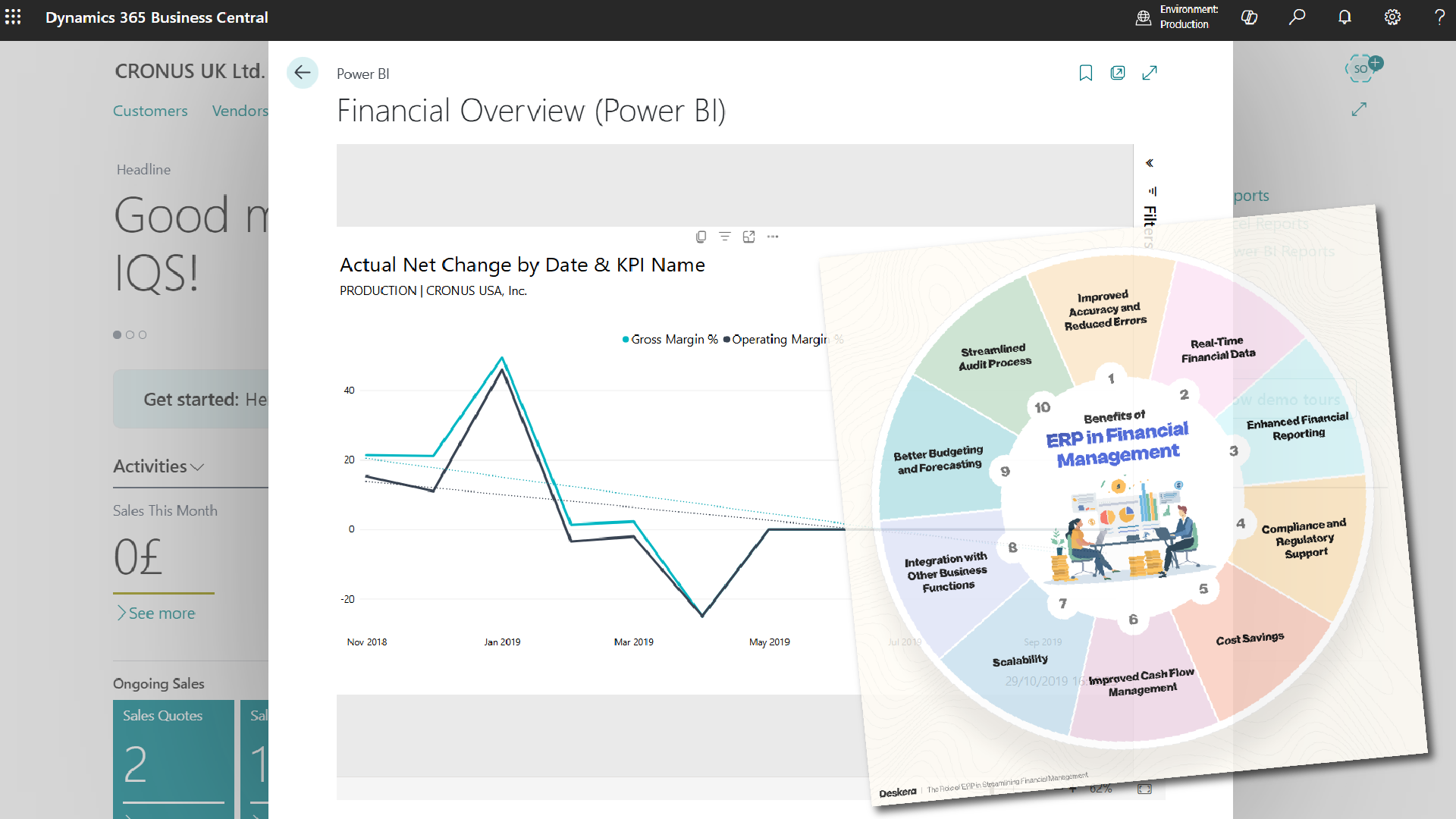In every ERP system — whether it’s Dynamics 365 Business Central, Odoo, SAP, or Oracle — the financial and accounting flow serves as the backbone of enterprise operations. Regardless of industry or deployment model, the financial structure defines how data moves, how compliance is maintained, and how business decisions are informed.
Key Accounting Components That Define ERP Finance
To master ERP finance, one must grasp the core elements that structure every financial transaction:
- Chart of Accounts (CoA): The structured master list of all financial accounts categorized under Assets, Liabilities, Equity, Income, and Expenses.
- Double Entry System: Every transaction affects two accounts via debit and credit, ensuring financial accuracy and traceability.
- Accounting Equation: The fundamental relationship Assets=Liabilities+Equity\text{Assets} = \text{Liabilities} + \text{Equity}Assets=Liabilities+Equity
- Sub-ledgers: Specialized ledgers that track details for Customers, Vendors, Inventory, and Fixed Assets, feeding summary entries into the G/L.
- Posting Groups: ERP-specific automation logic that maps business transactions to appropriate CoA accounts.
- Dimensions (D365 BC) / Analytic Accounts (Odoo): Tagging transactions with business context (e.g., department, project, location) for enriched reporting.
Standardized Financial Reporting Flow
ERP finance modules align with global standards by generating automated, real-time financial reports, which ensure transparency and decision support, in context of Report > Purpose > ERP impact flow:
Trial Balance
+ Ensures debit = credit > End-of-period integrity check
Income Statement (P&L)
+ Measures profitability > Compares Revenue vs. Expenses
Balance Sheet
+ Displays financial position > Matches Assets with Liabilities + Equity
Cash Flow Statement
+ Tracks liquidity > Classifies cash into operational, investing, and financing
Practice Scenarios to Solidify Understanding
To internalize ERP-finance integration, real-world simulations are essential. Practice the following:
- Create customer invoices and trace the impact across sub-ledger and G/L
- Record vendor bills and payments, analyzing posting and reconciliation
- Process payroll transactions and observe how salaries, taxes, and deductions are booked
- Execute accrual entries through recurring journals and verify adjusting entries
- Generate and analyze Trial Balance, Income Statement, and Balance Sheet
Conclusion
True ERP fluency is not just technical — it’s financial.
Understanding the universal financial flow empowers professionals to bridge business operations with governance, reporting, and strategic control. It’s the lens through which all ERP activity becomes measurable, compliant, and transformative.
m.h. | july 8 2025 | Dhaka, Uttara Sector 7


Leave a Reply